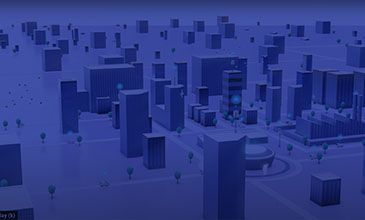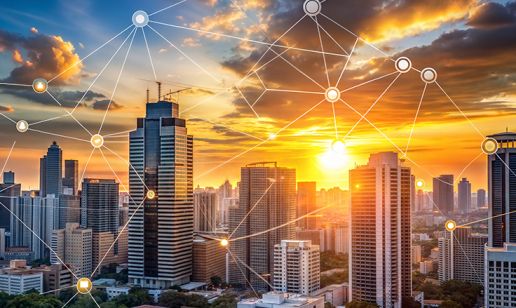Innovative Technology for Quick and Easy Smart City Parking Solutions
- Published
- 3 min reading
The Internet of Things is playing a vital role in the development of contemporary urban Smart solutions, especially in innovative parking management. In an increasingly broad range of fields, devices communicate with each other via the Internet or other communication channels. Thanks to this, cities function more effectively and develop sustainably, making it possible to improve living conditions for residents and protect the environment.
Innovative parking ideas
In transport, both public and private, the Internet of Things is having a major impact. Our modern cities rely on optimized and fluid traffic movement to function well. This is true in economic and environmental terms, but also when considering the human factor; viewed from a business perspective, one could see transport users as “customers” of the smart city – and we all know that customer satisfaction needs to be central to digital business strategies.
Parking is one of the most important elements of urban traffic structure. In smart cities, this can be facilitated with IoT devices that help drivers to find convenient parking spaces quickly and easily.
The essence of innovative parking management
Providers of technology innovation in parking solutions deliver dynamic car park information systems. An example might be a solution using a parking guidance and information system, informing drivers about spaces available in a car park, in real time. For that purpose, it is necessary to use devices to transmit the information, along with receivers and a server. Such comprehensive solutions need to give administrators an overview of the system, and should deploy a mobile element to optimize the occupancy of parking facilities, infrastructure and more.
Magnetic sensors either in or on the road surface can be used to verify car park occupancy, determining the number of remaining free spaces every time a car passes over them and disturbs the magnetic field.
Smart City: parking solutions
Optical sensors such as video cameras installed on street lamps and directed at parking areas are an alternative, more advanced solution. They can be equipped with analytical modules to process images into metadata, do not damage infrastructure, can be recalibrated according to need, and have the advantage of use as an element of broader urban security programs. With technologies such as LTE and 3G for parking video cameras, developers and suppliers such as Comarch are free to innovate and deliver smart parking imaging systems with outstanding detection quality, great flexibility and cost optimization.
For communication between car park sensors, and for data transfer, various kinds of communication standards can be used. In a traditional car parking guidance system, radio networks have been most commonly used. However, manufacturers are increasingly offering sensors that take advantage of telecommunications networks and the capabilities of mobile carriers. An example is the Narrowband IoT (NB-IoT) standard.
The optimal smart car parking innovation will be a solution capable of integrating different kinds of data from car parks to provide a comprehensive car parking guidance system that combines cameras, sensors and other devices to analyze car park occupancy. Information about whether a specific parking space is occupied should be delivered in real time, making it easier for a driver to locate a free space, while administrators should be able to access current and archival data for analysis and reporting via a dedicated parking management portal.
Role of technology in innovative parking management
Technology innovation in parking solutions allows rational policy-making that takes into account infrastructure and demand so that parking fees can be set and adjusted accurately.
Other benefits include prestige for the city in question, and customer satisfaction for residential and commercial users who are much more inclined to choose those car parks where it is easy to find a space. The right solution can also have environmental advantages, for example by reducing the level of idle traffic and associated emissions.







